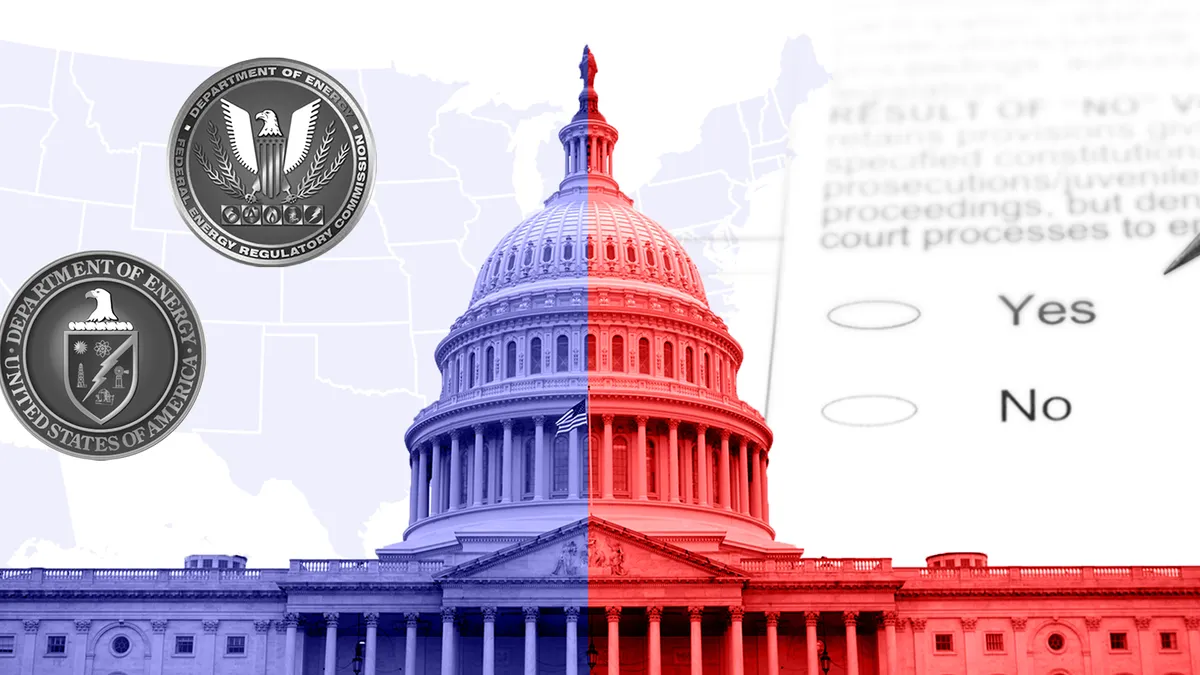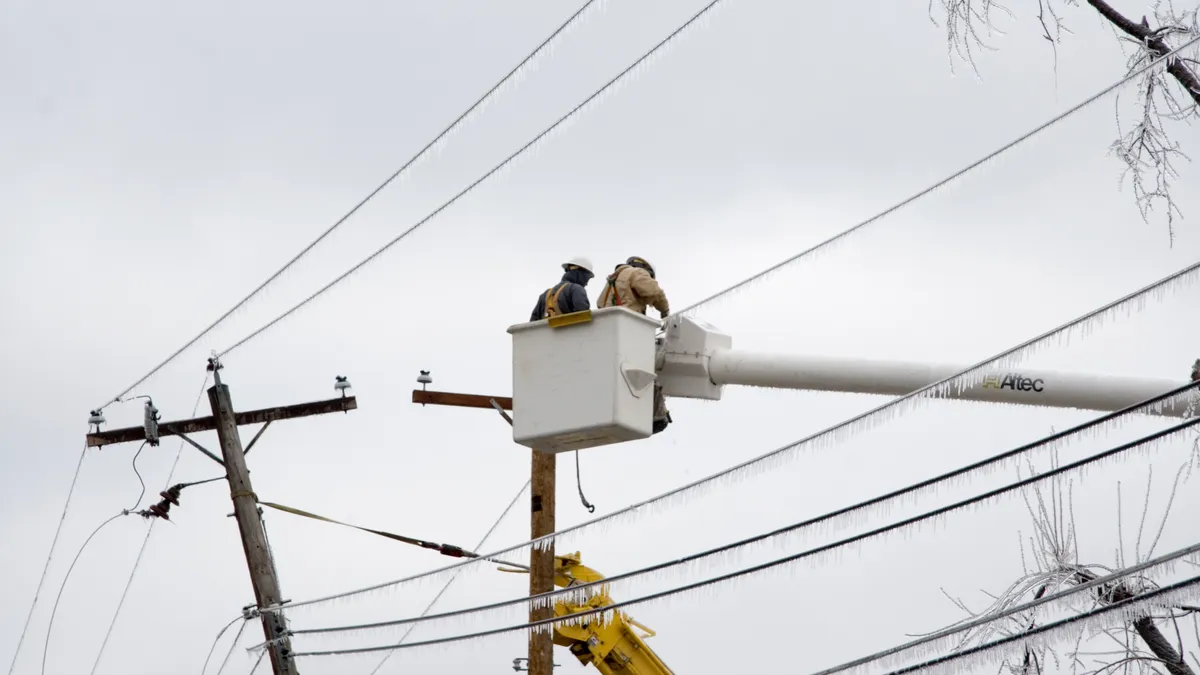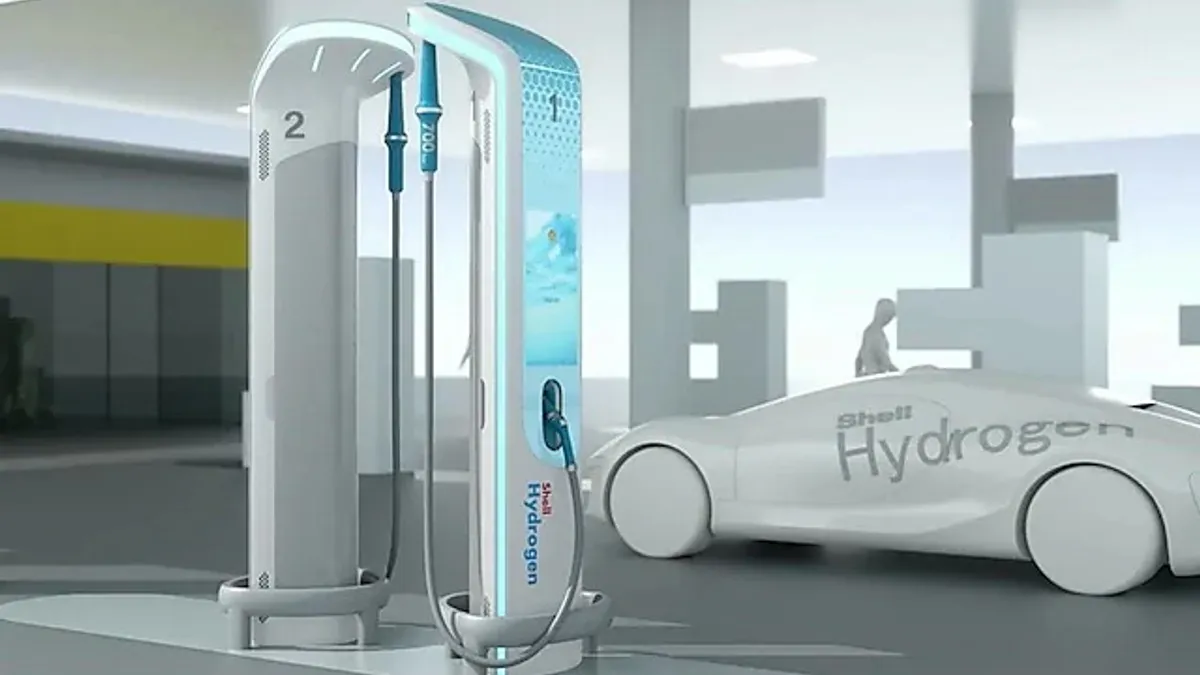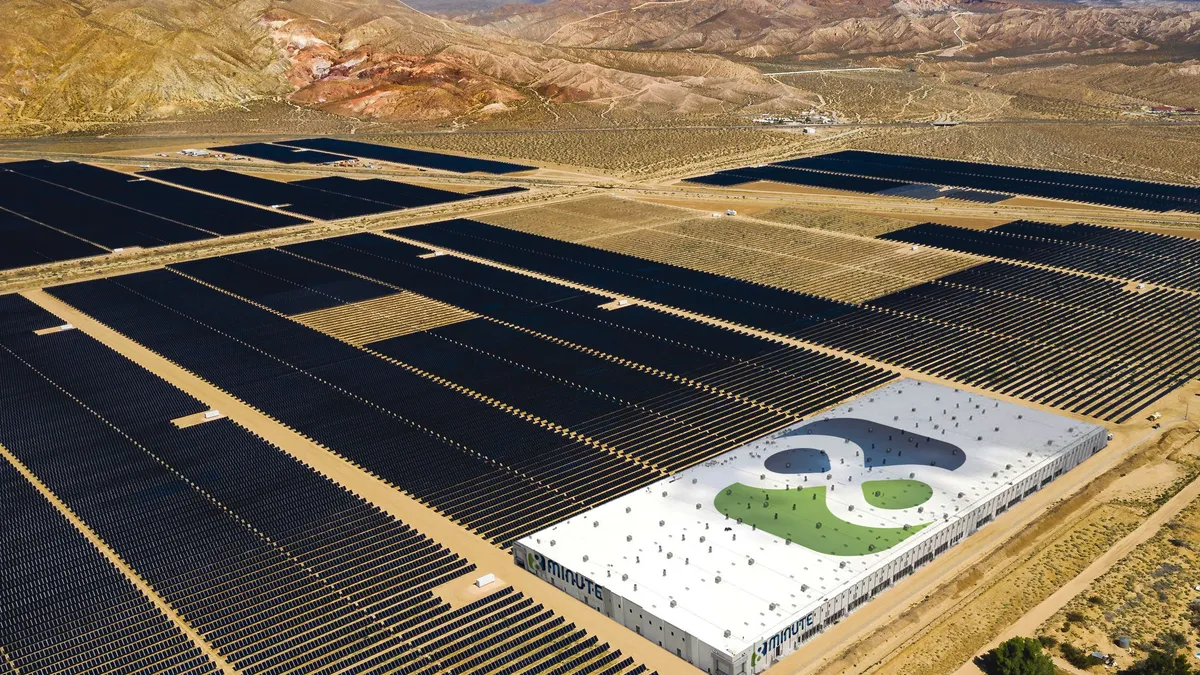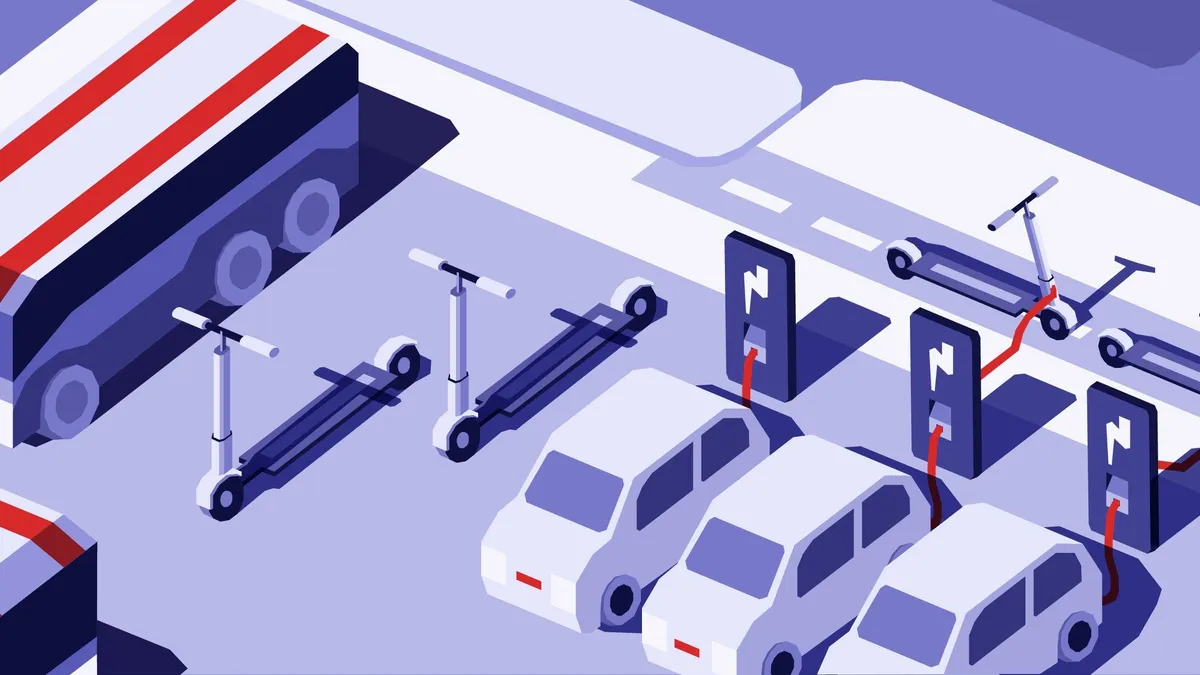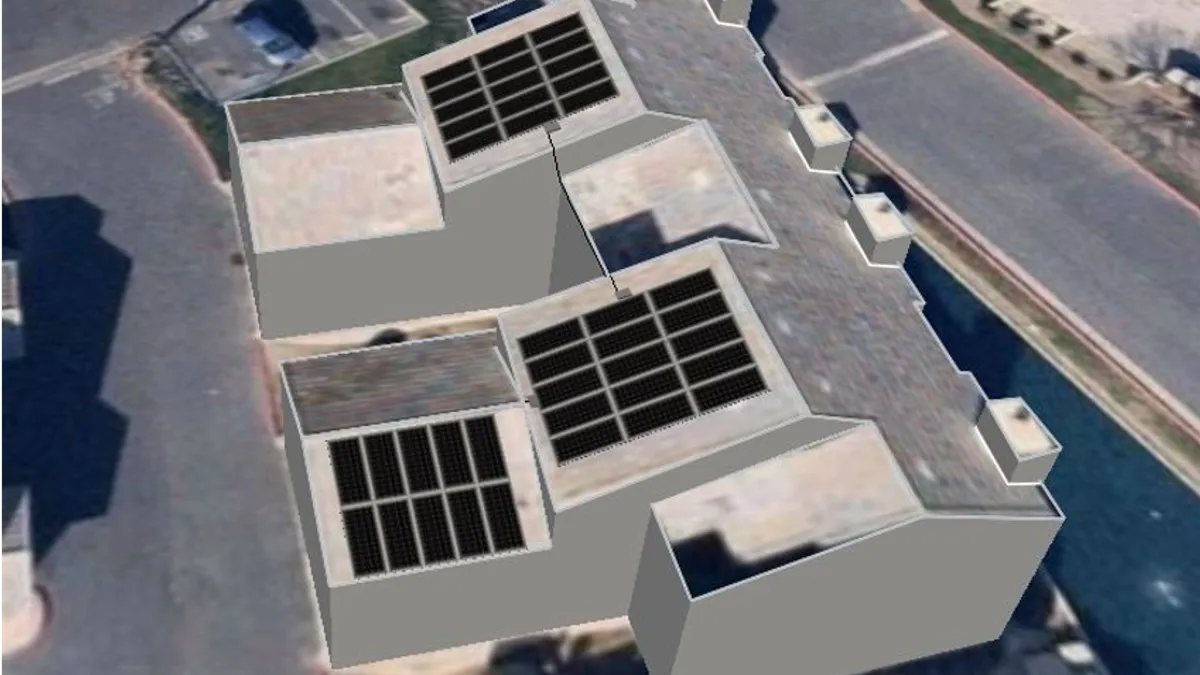Distributed Energy: Page 20
-
Deep Dive
Election 2020: Trump's FERC may need to shift course on clean energy, though Biden's road will not be easy
No matter what happens Nov. 3, the agency will have no choice but to address the industry's transition, even if it means backing away from some of its more controversial policies under the Trump administration, analysts say.
By Catherine Morehouse • Oct. 27, 2020 -
Battery constraints preventing ramp up of electric truck production, Tesla says
The Semi requires "five-ish times" more cells than a passenger vehicle, according to CEO Elon Musk, which makes it challenging to scale manufacturing of the Class 8 electric truck.
By S.L. Fuller • Oct. 27, 2020 -
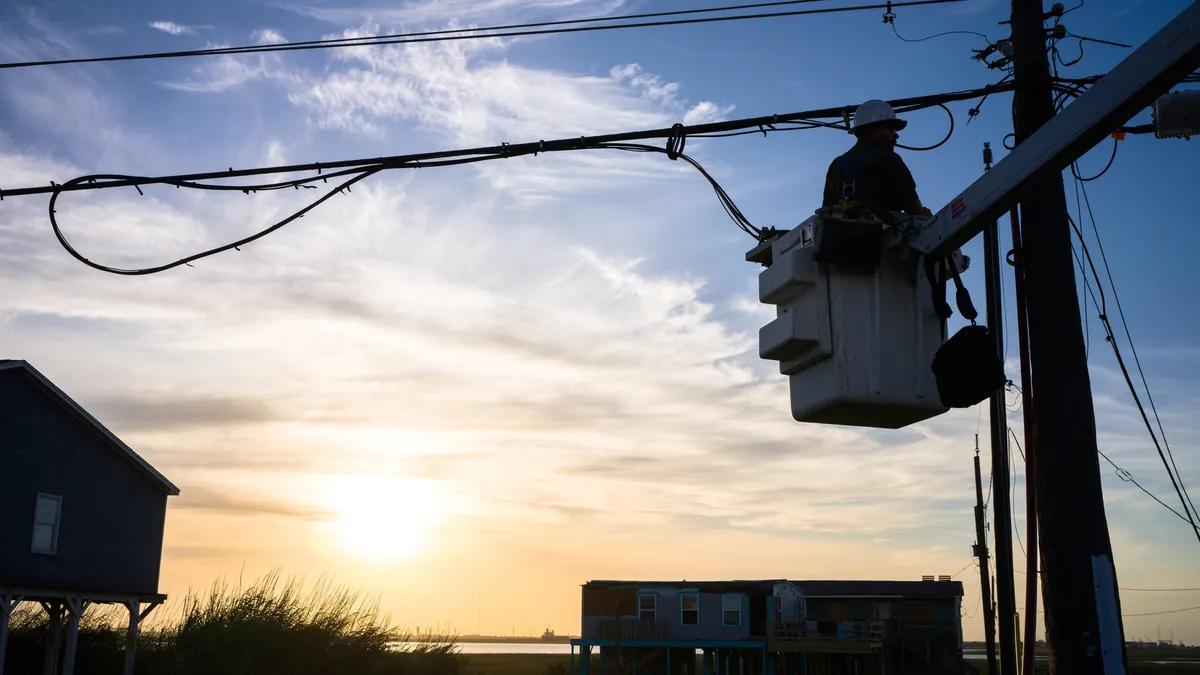 Explore the Trendline➔
Explore the Trendline➔
 Brandon Bell/Getty Images via Getty Images
Brandon Bell/Getty Images via Getty Images Trendline
TrendlineAI in the Power Sector
Artificial intelligence is uniquely positioned to impact the electricity industry from both ends: as the technology driving large load demand growth and as a tool with the potential to make the power system more efficient.
By Utility Dive staff -
Trump administration funds projects to more efficiently charge and deploy electric buses
MIT, Utah State University and the Chattanooga (TN) Regional Transportation Authority each received $1.75 million grants to improve transit systems using "innovative vehicle technologies."
By Chris Teale • Oct. 26, 2020 -
Deep Dive
As conflict rises over utility DER ownership, a Duke Florida program could offer a way forward
Regulators must decide how to separate regulated and private markets as both see ownership of rooftop and community solar.
By Herman K. Trabish • Oct. 23, 2020 -
FERC landmark DER rule leaves open questions on grid operator implementation
A key question is whether grid operators and utilities try to open up market participation to DERs as much as possible, or whether they just do the bare minimum, a storage executive said.
By Catherine Morehouse • Oct. 22, 2020 -
Pennsylvania to be a testing ground for how utilities manage distributed energy
A settlement agreement would pave the way for PPL Corp. to conduct a pilot program with broad implications for questions of utility control over rooftop solar and behind-the-meter storage.
By Matthew Bandyk • Oct. 14, 2020 -
Illinois Commerce Commission launches new probe to resolve questions about Ameren's net metering claims
Ameren announced its intention to switch from full retail net metering for future residential solar customers due to market saturation, and solar installers claim the plan is worse for business than the pandemic shutdown.
By John Funk • Oct. 9, 2020 -
Sponsored by IBM
Winterize your grid with intelligent vegetation management and outage prediction
Utilities must factor winter weather into their year-round vegetation management plans.
Oct. 9, 2020 -
Ameren rejects Illinois regulators' request, ends retail net metering for new residential solar customers
Ameren said the Illinois Commerce Commission's Oct. 1 "request" that it continue full net metering would lead the utility to violate its approved tariff.
By John Funk • Oct. 6, 2020 -
Illinois regulators move to preserve retail net metering rate, order audit of Ameren's bid to end it
Ameren Illinois says customer solar generation is about to reach 5% of peak demand on its system, allowing it to end retail net metering under state law.
By John Funk • Updated Oct. 2, 2020 -
Deep Dive
Demand response failed California 20 years ago; the state's recent outages may have redeemed it
The West's recent heatwaves put California power users in the dark but showed how flexible demand response, including distributed storage, can keep the lights on.
By Herman K. Trabish • Sept. 28, 2020 -
'This will change the nature of load': what California's zero emission vehicle order means for the power sector
"I strongly suspect that the grid planners of the world are already looking to an all-electric vehicle future," said Morten Lund, a partner at Stoel Rives.
By Kavya Balaraman • Sept. 23, 2020 -
Tesla unveils new EV battery design, but Musk downplays vehicle-to-grid application
"Very few people would actually use vehicle-to-grid" capabilities, said the company's CEO. "I think it's going to be better for people's freedom of action to have a Powerwall and a car separate."
By Robert Walton • Sept. 23, 2020 -
Deep Dive
Politics disrupts San Diego's pursuit of an energy transition partner amid dissatisfaction with SDG&E
San Diego's 50-year-old franchise agreement with San Diego Gas and Electric expires in January, but city leaders can't agree on standards for the next provider, leaving bidders, including Berkshire Hathaway Energy, waiting.
By Herman K. Trabish • Sept. 18, 2020 -
FERC lowers barriers to DERs in wholesale markets in rare Chatterjee-Glick consensus
The commission passed its long-awaited rule on distributed energy resource aggregations in a 2-1 vote two weeks after the departure of Commissioner Bernard McNamee.
By Catherine Morehouse • Sept. 18, 2020 -
Solar market limits pandemic's ill effects, but states with strict restrictions see big installation drop
A solar market report for the second quarter of 2020 shows the sector's 'resilience' in the face of COVID-19 as it adapts to new realities, though challenges from the current pandemic remain.
By Thomas Gresham • Sept. 17, 2020 -
How to participate in the 2020 Utility Dive Awards
Industry Dive is gearing up for the 2020 Dive Awards. We want to hear your ideas on the executives, utilities and policymakers that stood out.
By Utility Dive Editors • Updated Sept. 28, 2020 -
Deep Dive
Duke-solar industry breakthrough settlement aims to end rooftop solar cost shift debates
A collaboration among Vote Solar, Sunrun, Southeastern environmental advocates and Duke Energy has produced a rate design that could be a new paradigm for pairing and growing rooftop solar and demand response.
By Herman K. Trabish • Sept. 16, 2020 -
7 investment priorities for a green COVID-19 recovery: report
The Coalition for Urban Transitions analyzed how the allocation of stimulus funding across a number of environmental sectors can aid the international COVID-19 response.
By Kristin Musulin • Sept. 14, 2020 -
California proposes $41M Shell grant for hydrogen fuel cell EV infrastructure
Shell said it has partners in Toyota and Honda, which have agreed to expand fuel-cell electric vehicle sales in the state to support the stations.
By Jim Stinson • Sept. 14, 2020 -
Opinion
Adding it all up: Counting the capacity contribution of variable and duration-limited resources
The failure to properly count the quantity of capacity available to meet load during extreme weather events, like wildfires, can lead to inadequate power supplies and rotating blackouts, the authors write.
By Nick Schlag, Zachary Ming and Arne Olson • Sept. 10, 2020 -
Alabama's increase of residential solar charges will slow installations, advocates say
Solar proponents say Alabama Power's monthly charge has stymied rooftop solar development, but commissioners argued for an increase in the fee.
By John Funk • Sept. 2, 2020 -
Deep Dive
As utility collaboration with charging companies rises, emerging differences could impede EV growth
To accelerate EV charging infrastructure deployment, former competitors are working together, but new questions threaten to lead to dissension.
By Herman K. Trabish • Aug. 31, 2020 -
Wasatch Group, sonnen plan 24 MW, 60 MWh virtual power plants in California for $130M
The companies are beginning the first of seven retrofit projects in September in a Fresno apartment community, planning to add 3,000 batteries and solar power to homes.
By Iulia Gheorghiu • Aug. 27, 2020 -
Energy consulting groups value Southeast RTO potential at $384B savings by 2040
A seven-state RTO, including Florida, Tennessee and the Carolinas, would phase out coal generation and add more storage and renewables into the mix, according to analysis from Vibrant Clean Energy.
By Iulia Gheorghiu • Aug. 25, 2020

